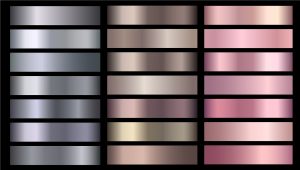In today’s jewelry industry, CNC (Computer Numerical Control) machining has become the core technology behind high-end accessory production. Whether working with gold, silver, stainless steel, titanium, or brass, CNC allows designers and manufacturers to achieve exceptional dimensional accuracy and intricate designs that elevate jewelry to a new level of refinement.
However, behind every piece of jewelry that looks effortless and elegant lies a world of precision control and quality assurance. The true brilliance of CNC-made jewelry doesn’t only depend on design or material—it depends on how precisely every micron is managed. This article explores how CNC jewelry components are manufactured and quality-controlled, what tolerance ranges define “premium quality,” and how manufacturers maintain consistency batch after batch.
1. The Core of Quality Control in CNC Jewelry Manufacturing
Although CNC machining is a highly automated process, jewelry production requires extraordinary attention to detail. Even the smallest dimensional deviation can lead to issues such as poor fitting, misaligned gemstone settings, or visible surface imperfections. Therefore, quality control begins long before cutting starts.
1.1 Machine and Process Stability
High-precision CNC jewelry manufacturing relies on rigid, vibration-resistant machines such as Brother, Citizen, and Jingdiao systems. These machines offer greater spindle accuracy, servo response, and automatic tool compensation.
Before machining begins, operators perform spindle thermal compensation, tool length calibration, and workpiece alignment to ensure repeatability. For mass production, tool life logs are maintained to prevent dimensional drift caused by worn tools.
1.2 Material Consistency
Different metals behave very differently under cutting conditions. Silver is soft and ductile; titanium is strong but difficult to machine. Maintaining consistency means inspecting every batch of raw material for density, hardness, and purity.
For precious metals such as gold and silver, annealing or stress-relief treatment may be performed before machining to prevent warping during or after cutting.
1.3 Dimensional Measurement and Inspection Equipment
Jewelry components are often smaller than a fingernail, so even a 0.01 mm deviation can affect quality. Common inspection tools include:
-
Profile projectors for contour and edge inspection
-
Coordinate measuring machines (CMMs) for critical geometry
-
Microscopic measuring systems for stone-setting holes
-
Micrometers and calipers for routine checks
Typically, manufacturers apply a First Article Inspection (FAI), In-Process Quality Control (IPQC), and Outgoing Quality Control (OQC) procedure to guarantee that every batch meets specification.
1.4 Surface Quality Control
A jewelry piece’s visual appeal depends largely on its surface finish. Before electroplating, each part is polished and inspected for tool marks, burrs, or edge collapse. Surface roughness (Ra) is usually kept below 0.2 µm, while luxury jewelry often requires a mirror-like finish with near-zero visible texture.
2. Tolerance Standards in CNC Jewelry Machining
In precision manufacturing, tolerance defines the allowable dimensional deviation of a part. The smaller the tolerance, the higher the machining difficulty—but also the greater the perceived quality and fitting accuracy. Below is a reference table summarizing common tolerance ranges in jewelry CNC machining:
| Type of Component | Material | Standard Tolerance | Premium Tolerance (Luxury Grade) | Notes |
|---|---|---|---|---|
| Silver parts (rings, pendants) | 925 / 999 silver | ±0.02 mm | ±0.01 mm | High surface polish requirement |
| Stainless steel jewelry | 304 / 316L | ±0.03 mm | ±0.015 mm | Corrosion-resistant applications |
| Brass / copper parts | H59 / H62 | ±0.03 mm | ±0.015 mm | High polishability; thermal expansion |
| Titanium jewelry | Ti-6Al-4V | ±0.02 mm | ±0.01 mm | Lightweight and durable |
| Micro-setting mounts | Precious metals | ±0.005 mm | ±0.002 mm | Extremely high hole precision |
For high-end brands, a ±0.01 mm (10 µm) tolerance is considered a hallmark of premium quality. For standard consumer jewelry, keeping tolerances within ±0.02 – 0.03 mm ensures an excellent balance between cost, performance, and appearance.
3. The Quality Control Workflow
Achieving this level of precision requires a structured and disciplined workflow. A typical CNC jewelry manufacturing line includes several key inspection stages:
3.1 First Article Inspection (FAI)
Before mass production, one sample is fully machined and inspected. Only after confirming that dimensions, surface finish, and tool paths meet requirements does the production run begin.
3.2 In-Process Quality Control (IPQC)
During machining, samples are checked periodically (every 10–20 pieces) to ensure that temperature changes, tool wear, or vibration have not altered critical dimensions.
3.3 Outgoing Quality Control (OQC)
Finished pieces undergo 100% surface and dimensional inspection. This includes verifying polishing quality, plating uniformity, engraving clarity, and assembly alignment.
3.4 Data Recording and Traceability
Statistical Process Control (SPC) data are collected to analyze dimensional variations and maintain full production traceability. This not only prevents batch defects but also supports continuous improvement and ISO quality audits.
4. Techniques to Enhance Dimensional Precision
Even with advanced equipment, precision depends heavily on how environmental and process variables are managed. The following techniques are widely used to optimize CNC jewelry manufacturing:
4.1 Temperature-Controlled Workshops
Metal expands and contracts with temperature changes. Keeping the machining area at a constant 20 ± 1 °C dramatically improves dimensional stability and repeatability.
4.2 Custom Fixtures and Vacuum Clamping
Because jewelry parts are small and delicate, standard vises can deform them. Custom micro-fixtures or vacuum clamping systems ensure that parts are held firmly without distortion.
4.3 Minimal Finish-Cut Allowance
The final finishing pass should leave less than 0.02 mm of material to remove. This minimizes cutting pressure and ensures a flawless surface.
4.4 Dual-Stage Measurement Before and After Plating
Electroplating adds thickness that can alter fitting dimensions. Therefore, key features are measured both before and after plating to guarantee proper assembly.
5. Surface Finishing and Aesthetic Control
Precision machining sets the foundation, but finishing processes bring the jewelry to life. After CNC milling or turning, components undergo several steps:
-
Deburring and polishing with graded abrasives
-
Ultrasonic cleaning to remove residue
-
Mirror finishing using diamond paste
-
Electroplating with gold, rhodium, or palladium for color and protection
Every stage is inspected visually and under magnification to ensure no scratches, pits, or uneven color appear. The combination of mechanical precision and flawless finishing is what separates a luxury piece from a mass-produced one.
6. Tolerance as a Measure of Craftsmanship
In CNC jewelry production, tolerance is more than a number—it’s a philosophy. It reflects how far a manufacturer is willing to go in pursuit of perfection.
When tolerances are controlled within 10 microns, every curve, prong, and setting edge aligns precisely as intended. Under magnification, the difference between a standard part and a premium one becomes obvious—the surfaces blend seamlessly, stones sit perfectly, and the overall feel exudes luxury.
High-precision tolerance control not only ensures aesthetic perfection but also improves the durability of the final product. Tight fitting between components reduces friction, prevents loosening over time, and enhances the jewelry’s lifespan.
7. The Future of CNC Jewelry Manufacturing
As technology evolves, jewelry production is moving toward even higher precision and efficiency. Innovations such as five-axis CNC machining, ultrasonic polishing, and AI-assisted optical inspection are transforming how jewelers design and produce components.
Automation is enabling seamless integration from CAD design to CAM machining to robotic finishing, reducing human error and guaranteeing consistency across thousands of pieces.
However, even as automation advances, the essence of jewelry manufacturing remains the same: a balance between artistic creativity and microscopic precision. The human touch—combined with scientific process control—is what truly defines luxury craftsmanship.
8. Conclusion
CNC jewelry manufacturing is both an art and a science. Behind each elegant pendant or finely detailed ring lies a complex process of material control, thermal management, precise machining, and meticulous inspection.
By maintaining a tolerance of ±0.01 mm or better, manufacturers achieve not only dimensional perfection but also a tangible expression of brand quality. As consumers increasingly value craftsmanship and precision, mastering CNC quality control becomes the key to standing out in the modern jewelry market.
In the end, every micron counts—and within that tiny space lies the brilliance of technology, artistry, and passion for perfection.



